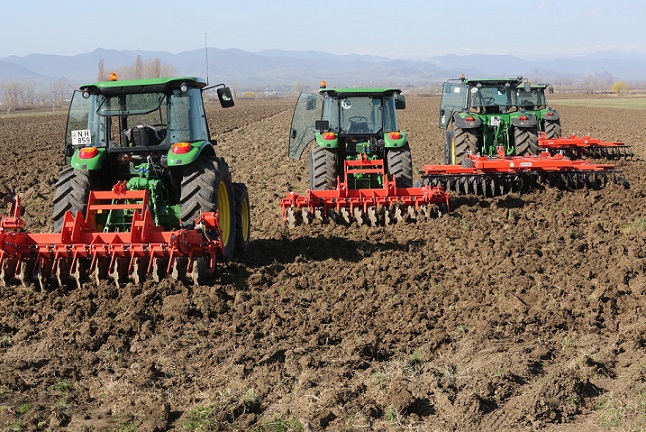Satisfying the needs of all participants is the main task of organizing a cooperative. Regardless of the direction of its activity, all functions are carried out on the basis of Russian legislation. Such an organization allows you to cover the interests of different directions: material, spiritual, social. Any issues that arise during the implementation of cooperation are resolved by voting. Each member of the cooperative (the type of activity does not matter) has the right to one vote.
Term concept

The association of citizens' organizations on a voluntary basis, which is founded with the aim of satisfying the material or other needs of members of society, is called a cooperative. Its types are quite diverse and find application in many areas of our lives. However, it can definitely be noted that unshakable cooperative principles underlie any such structure.
Members of the cooperative, through a general meeting, have the opportunity to group with other similar organizations, forming associations. This phenomenon is most often seen in the agricultural sector, as well as housing (for example, summer-building cooperatives). If the number of members of the company exceeds 50 people, a supervisory board may be organized. It plays the role of controlling the activities of the cooperative body. It is noteworthy that outsiders cannot be members of the supervisory board. Combining at the same time the role of the chairman or member of the board and the supervisory board is unacceptable.
In practice, it can be noted that the creation of such an organization serves as a positive example in terms of the emergence of new jobs. The most successful cooperatives eventually reorganize into joint-stock companies. On the one hand, this positively affects the growth of profit and profitability of the organization. But there are also disadvantages in this phenomenon: the acceptance of new members ceases, less attention is paid to social policy, which affects staff turnover and lowering the quality of the product being sold.
Manufacturing or consumer

It is extremely important to correctly formulate what the concept and types of cooperatives are. The definition was given above, with regard to the types of cooperation, there are a lot of them. Their classification into consumer and production deserves special attention. In the first case, the participation of members of society is not necessary, which cannot be said about the second. If the main objective of the cooperative is to make a profit, then it is referred to as production. In other cases, we are talking about consumer cooperation.
It is worth noting a special type of enterprise - production cooperatives, they are more often found in the field of agriculture. This is due to the fact that a member of the organization necessarily performs labor functions in the process of activity. He must make his share, the size of which is determined by the main internal document - the charter. Both monetary and property land shares are taken into account.
In the process of growth, production cooperatives unite in associations, unions, alliances, and other similar structures. Members of the cooperation carry out their activities based on the principle of voluntariness. Due to this, the effect of the implementation of the tasks and goals is achieved faster.
Kinds

In international practice, there are commercial and non-profit cooperatives. Some are created with the aim of obtaining material wealth, while others are created to satisfy material needs.It is customary to distinguish the following types of cooperatives, the organizations of which are found in Russia:
- Industrial.
- Credit.
- Consumer.
- Housing.
- Agricultural, service providers should be identified here.
- Fishing.
There are also insurance cooperatives that cover several areas of activity. For example, they implement policies, make payments, accompany clients during the trial (offer the services of their experts and specialists), and assess the damage caused to the insurance object.
There are also universal activities of the cooperative, which combine several functions, for example, lending, sales, supply, provision of services. It is noted that in such universal cooperatives, the effectiveness of the organization is much higher than in those that perform only one specific function.
In addition to sectoral division, one can also note the voting procedure and distribution of profits. The so-called “pure” cooperative implies the possibility of its member having only one vote in the voting process, and the income received is distributed based on his activity in the organization. If the cooperation is organized with elements of a joint-stock company, then the profit is divided according to the size of the share, labor activity is not taken into account. In some cases, a cooperative can combine both forms, and is called mixed.
Due to what function?
Many are interested in what are the types of cooperative funds, what is included there, what are its functions. The answer can be found in the law on consumer cooperation, which says that to fulfill the tasks set forth in the charter, the following funds are needed:
- The formation of the share.
- Wages.
- Spare.
Members of a cooperative determine their size, the process of use and formation. In some cases, it may be necessary to form an indivisible fund, which must be distributed in accordance with the procedure prescribed by law. Members of the organization must mention in the charter property that also belongs to indivisible. The legislator notes that these can be structures, buildings, equipment, machinery, seeds, animals. They cannot be given out as a share to the members of the cooperation either in the process of its existence, or on condition of termination of membership for any reason.
The reserve fund, as a rule, is formed by deductions (annual) - at least 10% of the profit received by the organization. This applies to most types of cooperatives. Business or consumer cooperatives make contributions to this fund on the basis of income that comes from the payment of membership fees.
Industrial

The main document that governs the activity of production cooperatives, the types of which are quite diverse, is the Civil Code of the Russian Federation. It clearly states that this type of organization operates on the basis of the charter. Its text is subject to approval at the general meeting by all members of the cooperative.
The law defines the minimum number of members, there must be at least five people. The maximum value has not been determined, which positively affects the productivity and effectiveness of the cooperative. However, members of this organization may at any time withdraw from the number of interest holders and receive their share, as well as property defined by the charter, back. At a general meeting of members of a cooperative, the transition from consumer cooperation to the category of a business company or partnership may be determined. This decision must be unanimous.
It is worth noting that, along with consumer types of cooperatives, production can be attributed to such commercial structures that can receive and distribute profits as a result of carrying out their activities.Unfortunately, the number of such cooperations is insignificant; the largest are registered in the north of our country (Khanty-Mansiysk, Altai, Khabarovsk Territory and others). They have not only a head office, but also regional offices. If we talk about this form, production cooperatives provide jobs for several thousand citizens. At the same time, the source for the replenishment of the property fund is not only the mutual contributions of members of the cooperative, but also borrowed funds, income from activities and others not prohibited by law.
Credit
One of the most common types of cooperatives today is credit. This is a non-profit structure that cannot have the abbreviations CJSC, LLC or OJSC in its name. It is very important to know when it is necessary to determine whether you are dealing with a financial pyramid or a credit cooperative. It does not belong to the banking structure, but its specific place in the financial services market is deservedly in high demand among the population. This is due to the fact that the process of considering a loan application takes only a few minutes. Moreover, a minimum package of documents is required by the borrower, without guarantors.
However, credit cooperatives have one drawback - a high interest rate compared to large banking institutions. It is distinguished by the fact that it is charged (most often) daily and as a result can exceed the loan amount by several times.
A credit cooperative forms its money fund in several ways: by obtaining a loan from a commercial bank or by arranging a loan or entry fees from participants in a cooperative (investing). The organization controls the implementation of credit activities by the Central Bank of the Russian Federation, based on the provisions of the federal law “On Credit Cooperation”.
Members of the cooperative pay an entrance, membership, share fee. The funds received go to the formation of funds: reserve, mutual and mutual assistance. It is noteworthy that credit funds can only be received by members of the cooperative.
Consumer
Among other types of consumer cooperatives are different in that they are able to meet the needs of any category of population. This category has firmly consolidated its position in the cooperation market and is considered one of the oldest forms of interaction between seller and buyer. Such organizations find ways to implement their activities in a wide variety of areas. This can be food, shoes, everyday items, clothing and much more. This can also include intangible benefits, in particular the provision of educational, social services (organizations for caring for the elderly) and domestic services (dry cleaners, laundries, gas stations), cultural leisure (excursions, tourism).
If we talk about the process of selling some products, it looks like this: a large batch is purchased (for example, a large wholesale), and then it is sold in small retail. Point of sale can be departments, shops, kiosks. It is noteworthy that wage labor in such cooperatives is minimized, as regards the issue of implementation. Often, the participants in consumer cooperation themselves play the role of both the manufacturer and the body that sells their product.
Tough market conditions make us compete with large private organizations, providing a better and more profitable product. Part of the income must be distributed among the participants in the cooperative. It is noteworthy that the type of consumer cooperative depends on its profitability and long-term stay in the trade market.
Housing

The main activity of housing cooperatives, the appearance of which is not very popular at present, is to improve living conditions among its members. A similar organization is being created with the aim of acquiring apartments or houses or building them for further operation. Particularly popular was noted among the mass segment, i.e., citizens with medium or even low income. This type of cooperatives was very popular at the beginning of the 21st century, in particular in the CIS countries and America.
In some cases, members of a cooperative are building themselves, and such companies are usually called self-building. When the property is acquired from municipal or state authorities, then such an organization is considered based on the right of mutual ownership. There are also auxiliary cooperatives that issue loans or buy land for the subsequent construction of private houses.
In Russia, one can find garage-building, housing-storage, summer-building cooperatives and its other forms.
Agricultural

Recently, a revival of the number of agricultural cooperatives can be observed. The types and direction of their activities affect livestock and crop production, the production of raw materials for light, food industry, food. Due to the fact that small farms are combined into one cooperative, it becomes possible to solve many problems that somehow affect any such organization. These may be issues related to the processing of land, the supply of necessary equipment and its subsequent repair, sale and marketing of finished products, and others.
Types of cooperatives in the field of agriculture are divided into consumer and production. Each of them is called upon to fulfill its specific function. The former unite on a cooperative basis rural producers for the mutual supply of equipment, means of protection against insect pests, fuels and lubricants, etc. This can also include the provision of animal care services (veterinary medicine). The function of production agricultural cooperatives involves the joint processing of land owned by members of the organization. In this case, the right of private property is reserved for the owner.
It is noteworthy that agricultural cooperation is designed to increase the number of products produced. This fact is very important for the development of the state, as it helps to ensure that its citizens do not face shortages and shortages of food. The number of members of this type of cooperation cannot be less than two. Participation in it is strictly voluntary.
Fishing

In settlements where the main income is fishing, you can find fishing cooperatives. This is a rather peculiar kind of cooperatives, the main activity of which is associated not only with catching mollusks and various fish, but also with their breeding. The great popularity of this type of organization is noted in countries such as Japan, India and about 80 other countries of the world. If we talk about our country, it is customary to equate fishing cooperatives with agricultural ones.
From an economic point of view, the development of this type of cooperation allows us to cope with global fishing problems not only in inland waters, but also in coastal waters.
